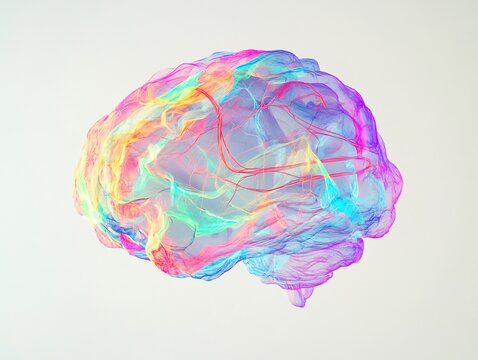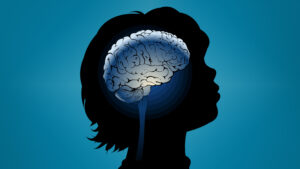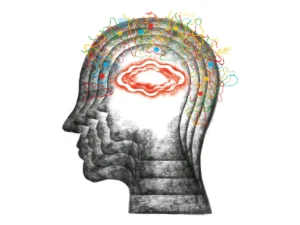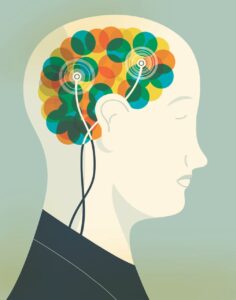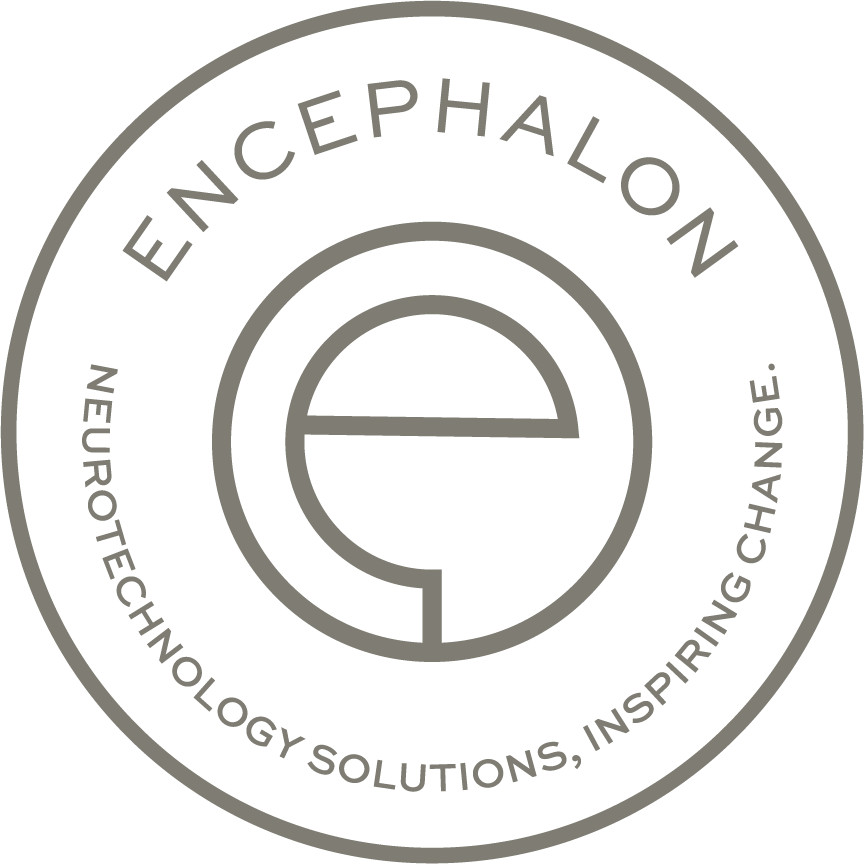Developmental disorders such as Attention Deficit Hyperactivity Disorder (ADHD), Autism Spectrum Disorder (ASD), and Down Syndrome have traditionally been understood as discrete categories with distinct causes, symptoms, and treatment approaches. However, a growing body of research and clinical evidence suggests that these seemingly separate conditions may actually share a common root: dysregulation of the nervous system. This perspective reframes developmental disorders not simply as cognitive, behavioural, or genetic anomalies, but as different manifestations of an underlying disruption in the body’s ability to regulate arousal, sensory input, emotion, and behaviour.
Interestingly, this is not a new idea. The roots of this unified model can be traced back more than a century, through the works of early neurologists and researchers who recognised that many psychiatric and developmental phenomena reflect imbalances in the nervous system.
Historical Conceptualisations of Nervous System Dysregulation
One of the earliest figures to frame disease in terms of systemic dysregulation was Dr. John Hughlings Jackson, a 19th century British neurologist. Jackson proposed that higher-order brain functions evolved on top of more primitive neural layers, and that damage or disruption to these newer layers could lead to a regression or “release” of lower-level, less regulated behaviors. His
hierarchical model anticipated modern understandings of developmental delay and regression as disruptions in neural organisation rather than binary presence or absence of function (Jackson, 1884). In the 1930s and 1940s, Hans Selye introduced the concept of General Adaptation Syndrome, emphasising the role of stress in physiological and neurological imbalance. He proposed that chronic stress could dysregulate the body’s systems, including the nervous system, leading to maladaptive outcomes (Selye, 1950).
Building on these ideas, Dr. Jean Ayres, an occupational therapist and neuroscientist, developed Sensory Integration Theory in the 1960s and 1970s. She observed that many children with learning and behavioral difficulties had trouble processing sensory input, which she attributed to dysfunction in the central nervous system’s ability to integrate stimuli (Ayres, 1972). Her work laid the foundation for understanding conditions like autism and ADHD as issues of sensory and nervous system
regulation. In more recent decades, Dr. Stephen Porges advanced this framework with Polyvagal Theory, which describes how the autonomic nervous system (ANS) particularly the vagus nerve, regulates states of safety, social engagement, and threat. According to Porges, many behaviours seen in developmental disorders result from the body’s difficulty transitioning between these states, leading to chronic fight-or-flight, freeze, or shutdown responses (Porges, 1995). These historical models converge on a central insight: that developmental and behavioural challenges often reflect underlying nervous system dysregulation rather than discrete “deficits.”
ADHD: Dysregulated Arousal and Executive Function
Attention Deficit Hyperactivity Disorder is often framed in terms of behavioural symptoms like inattention, impulsivity, and hyperactivity. However, neurological evidence suggests that these behaviours arise from dysregulation in neural circuits responsible for attention, arousal, and self- regulation.
Functional imaging studies consistently show that individuals with ADHD exhibit reduced activity in the prefrontal cortex, particularly in regions involved in executive function such as the dorsolateral prefrontal cortex and anterior cingulate cortex (Arnsten, 2009). These areas rely heavily on dopamine and norepinephrine to maintain attention and inhibit impulsive behaviour. When these neurotransmitter systems are under-functioning, the brain has difficulty maintaining stable regulatory
control. Physiological studies further support the dysregulation hypothesis. Heart rate variability (HRV), a measure of autonomic nervous system flexibility, is often lower in children with ADHD, suggesting diminished parasympathetic activity and poor adaptive regulation of arousal (Beauchaine et al., 2001). This means their nervous systems may be chronically stuck in heightened arousal states, leading to impulsivity and distractibility.
Autism: Sensory Processing and Connectivity Disruptions
Autism Spectrum Disorder is increasingly understood not just as a social communication disorder, but as a multisystem regulatory disorder affecting sensory, emotional, and autonomic regulation. One of the most consistent findings in autism research is the presence of sensory processing abnormalities. Studies show that up to 95% of individuals with ASD experience some form of sensory dysregulation, including hypersensitivity or hyposensitivity to sound, light, touch, or proprioception (Tomchek & Dunn, 2007). These symptoms suggest dysfunction in the thalamus and other sensory processing centres, which are responsible for gating and interpreting sensory input. In addition, functional connectivity studies show both overconnectivity and underconnectivity in key brain networks. A meta-analysis by Uddin et al. (2013) found that individuals with autism often exhibit abnormal connectivity in the default mode network (DMN) and salience network, both of which are critical for social cognition, attention, and emotional regulation. Autonomic dysregulation is also prevalent in autism. Children and adults with ASD often exhibit irregular heart rate, skin conductance, and breathing patterns, especially in response to social or sensory stressors (Bal et al., 2010). These are clear signs of autonomic nervous system imbalance, particularly involving vagal tone and parasympathetic control.
Down Syndrome: Genetic Origins, Regulatory Impacts
Down Syndrome, caused by an extra copy of chromosome 21, is typically classified as a genetic-disorder. However, its clinical manifestations reflect broader nervous system dysregulation. Neuroimaging studies show reduced volume in the cerebellum, hippocampus, and frontal lobes in individuals with Down Syndrome (Lott & Dierssen, 2010). These brain areas play crucial roles in motor coordination, memory, and executive function, as well as regulation of emotional and physiological states.
Children with Down Syndrome often experience hypotonia (low muscle tone), sleep disturbances, and attentional challenges. These symptoms point to underdevelopment of brainstem and autonomic circuits that regulate muscle tone, circadian rhythms, and arousal.
Moreover, individuals with Down Syndrome are at increased risk of autonomic instability, including bradycardia, temperature dysregulation, and diminished vagal activity. While the chromosomal basis of Down Syndrome is unique, its neurodevelopmental profile aligns with broader patterns of dysregulation seen in other developmental disorders.
Conclusion: Toward a Spectrum Model of Regulation
When viewed through the lens of nervous system regulation, developmental disorders appear less like isolated entities and more like points on a spectrum of deregulatory patterns. Whether through disrupted sensory integration, impaired autonomic tone, or altered brain connectivity, these conditions share a foundational theme: a nervous system struggling to maintain homeostasis. This perspective invites a shift in intervention strategy, from purely behavioural or pharmacological approaches to regulation-based therapies. Modalities such as occupational therapy, biofeedback, vagal nerve stimulation, somatic therapies, and sensory diets can help support the nervous system’s capacity to self-regulate.
Understanding developmental disorders as nervous system dysregulation not only reflects the convergence of historical insights and modern science, but also provides a more compassionate, integrative framework for helping those affected.
If you or someone you love is navigating ADHD, autism, or another developmental condition, consider a new path forward.
Based in Edinburgh, Encephalon offers neurofeedback and personalised nervous system care designed to address the root not just the symptoms.
Book a free consultation with our team today and explore how we can support your journey: BOOK NOW
References
-
Arnsten, A. F. T. (2009). The emerging neurobiology of attention deficit hyperactivity disorder: The key role of the prefrontal association cortex. Journal of Pediatrics, 154(5), I-S43.
-
Ayres, A. J. (1972). Sensory Integration and Learning Disorders. Western Psychological Services.
-
Bal, E., et al. (2010). Emotion recognition in children with autism spectrum disorders: Relations to eye gaze and autonomic state. Journal of Autism and Developmental Disorders, 40(3), 358–370.
-
Beauchaine, T. P., et al. (2001). Disinhibitory psychopathology in male adolescents: Discriminating conduct disorder from ADHD. Journal of Abnormal Psychology, 110(4), 610–624.
-
Jackson, J. H. (1884). Evolution and dissolution of the nervous system. Brain, 7(4), 389–422.
-
Lott, I. T., & Dierssen, M. (2010). Cognitive deficits and neurological complications in Down Syndrome. The Lancet Neurology, 9(6), 623–633.
-
Porges, S. W. (1995). Orienting in a defensive world: A Polyvagal Theory. Psychophysiology, 32(4), 301–318.
-
Selye, H. (1950). The Physiology and Pathology of Exposure to Stress. Acta Inc.
-
Tomchek, S. D., & Dunn, W. (2007). Sensory processing in children with and without autism. American Journal of Occupational Therapy, 61(2), 190–200.
-
Uddin, L. Q., et al. (2013). Salience network-based classification of autism. JAMA Psychiatry, 70(8), 869–879.

